Martin McWilliam
Clay, water and fire. Form leading to the formless. Space dissolving space.
Known for: coil/slab-built stoneware "Trompe-l'œil" objects
“I make coil/slab-built Stoneware "Trompe-l'œil" objects, coloured with kaolin slips all wood-fired in a 6 ku/m chamber kiln. They give the idea of simple bowls and jars, of a tradition that has given me a lifelong fascination but take them into another space of the mind.”
Inspired by traditional Japanese pottery, many of these stoneware or porcelain sculptural pieces are hand-built slab with a slate or aluminium base, often studded with inclusions of natural materials, and wood-fired in a chamber kiln. The artist often chiselled the pieces after firing to reveal the essence of each work – the archetypal vessel of Martin’s imagination.

Bowl Object XXIV-I, hand-built slab with an aluminium base, 12.75 x 16.5 x 3.5 inches (33 x 42 x 9 cm), $925.00 Cdn.
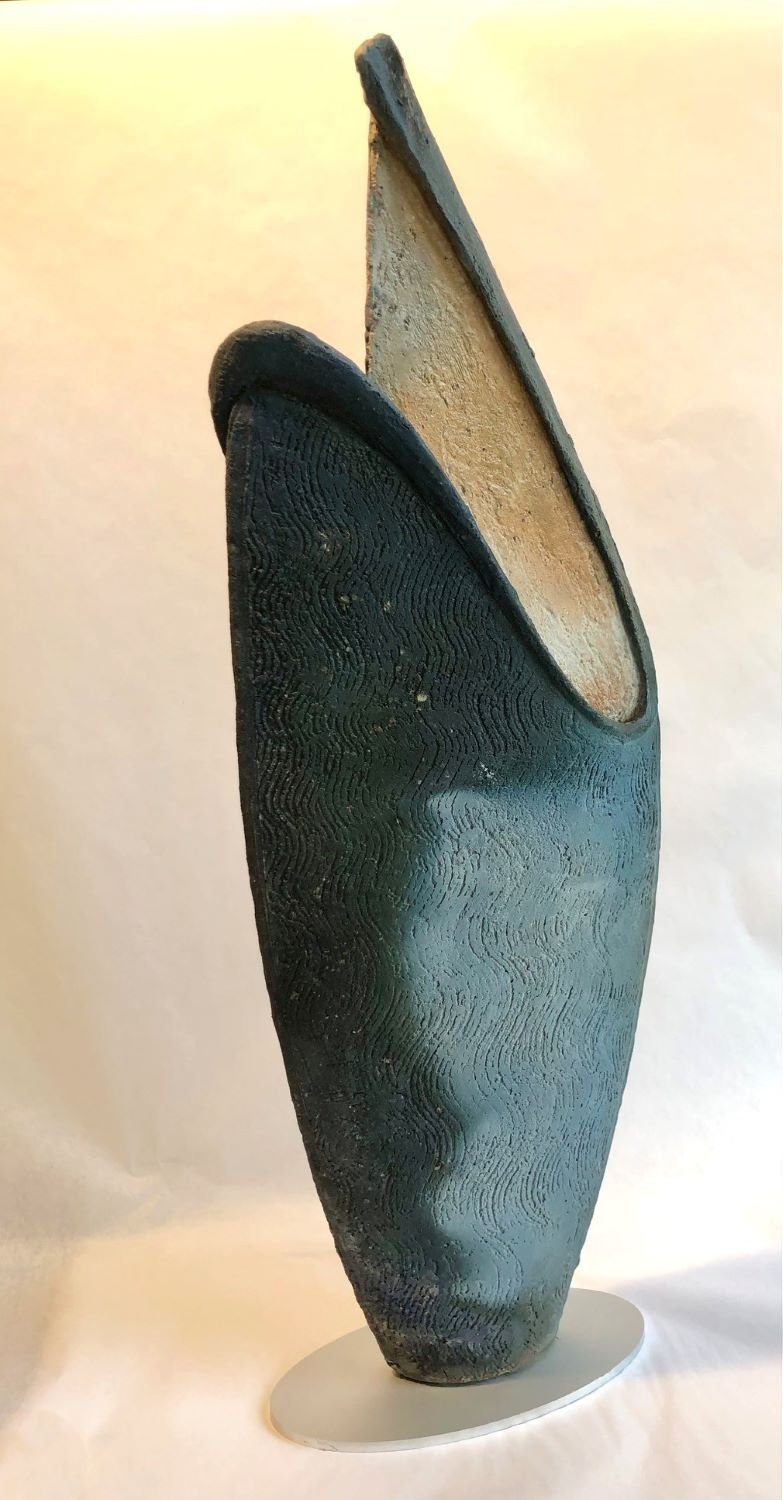
Vase Object XXIV-II, hand-built slab with an aluminium base, 12.75 x 16.5 x 3.5 inches (33 x 42 x 9 cm), $925.00 Cdn.
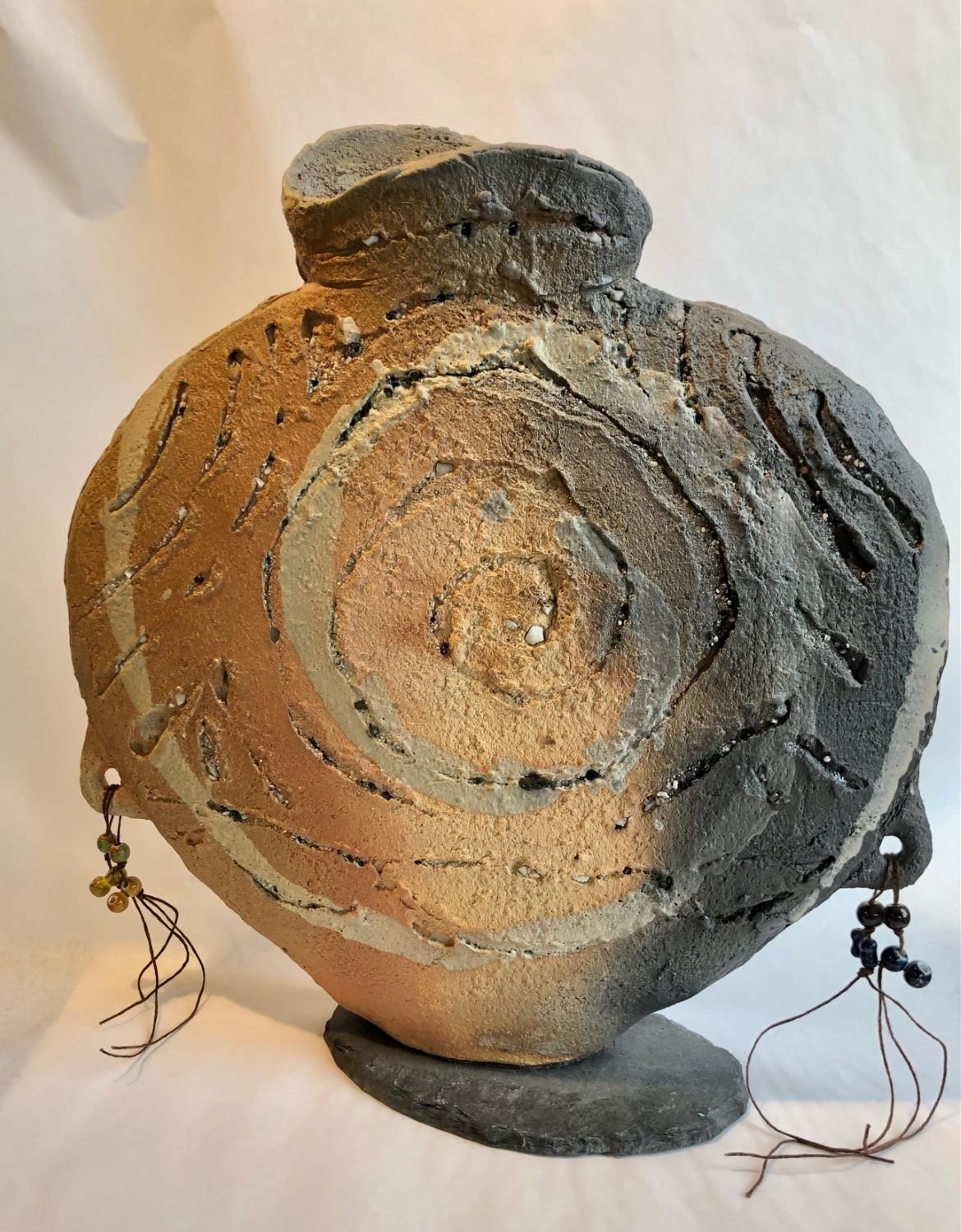
Vase Object XXIV-V, stoneware hand-built coil slab with a slate base, studded with inclusions of natural materials, and wood-fired in a chamber kiln, twine & glass beads. The piece is chiselled after firing to reveal the essence of the piece, 13.5 x 13.5 x 4.5 inches (34.5 x 34.5 x 11.5 cm), $820.00 Cdn.
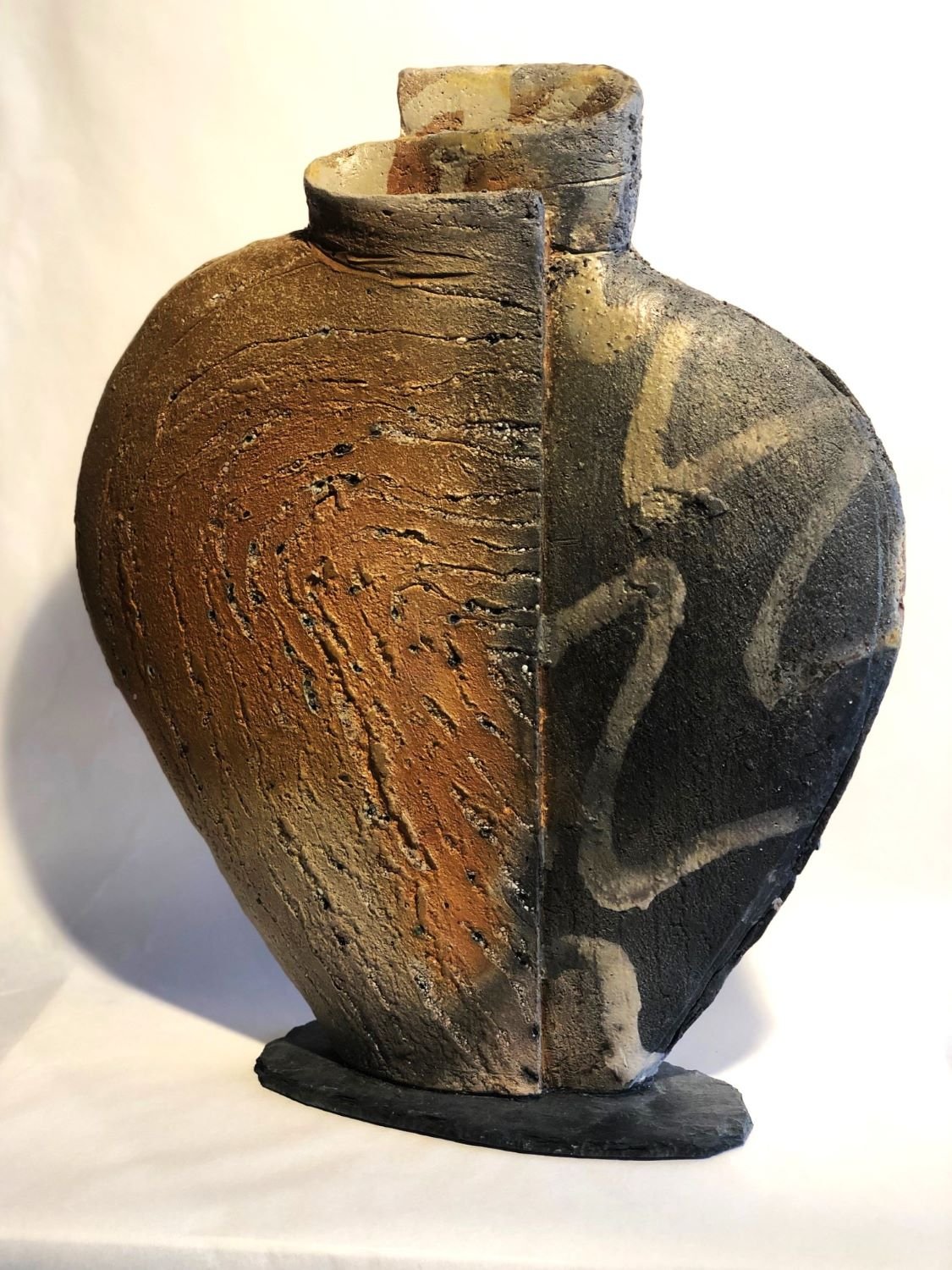
Vase Object XXIII-II, stoneware hand-built slab with a slate base, studded with inclusions of natural materials, and wood-fired in a chamber kiln. The piece is chiselled after firing to reveal the essence of the piece, 15.5 x 13.5 x 4 inches (39.5 x 34.3 x 10 cm), 4.3 kg, $925.00 Cdn.
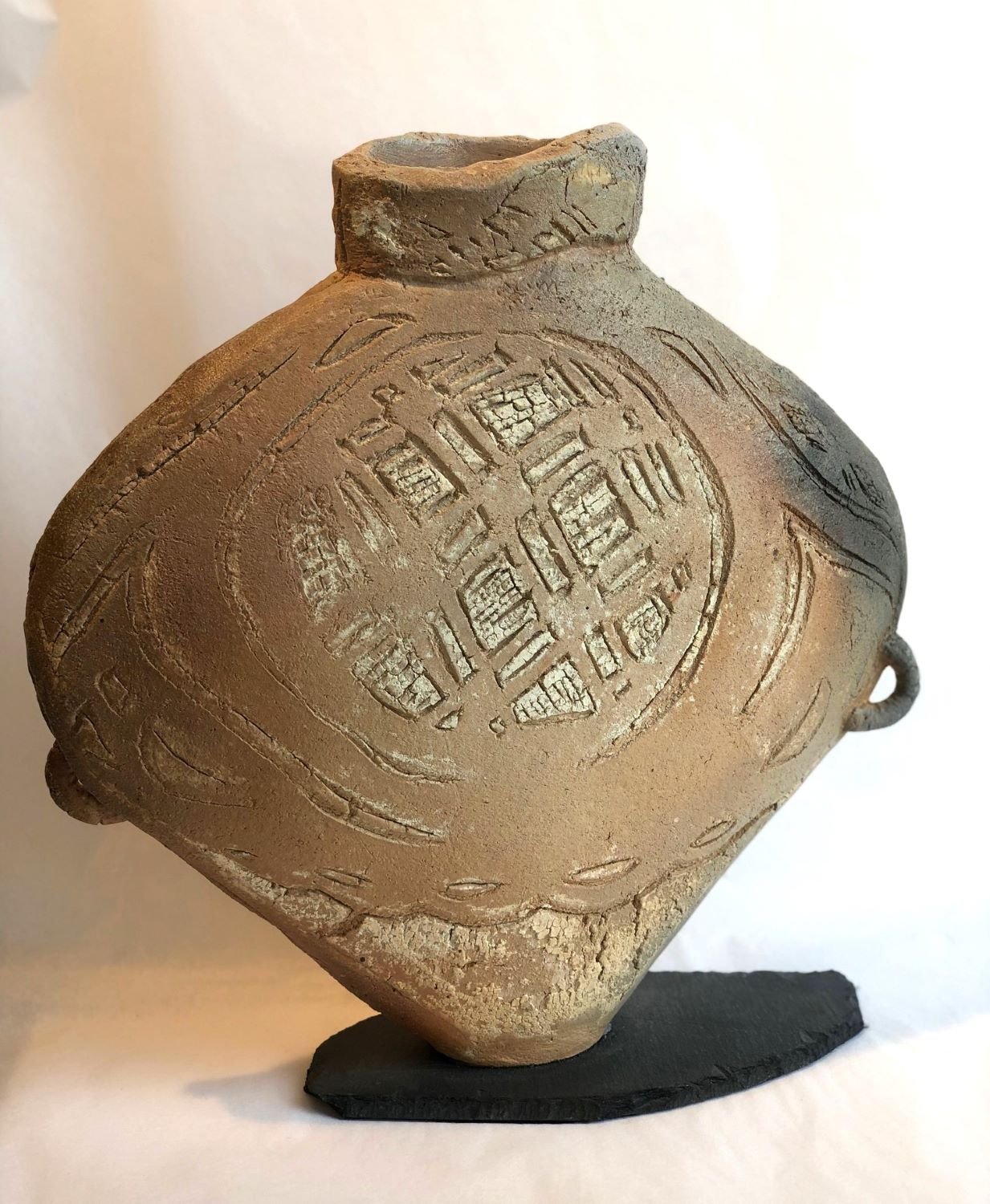
Vase Object XXIV-VI, stoneware hand-built slab with a slate base, studded with inclusions of natural materials, and wood-fired in a chamber kiln. The piece is chiselled after firing to reveal the essence of the piece, 13 x 12.5 x 4 inches (33 x 32 x 10 cm), $680.00 Cdn.
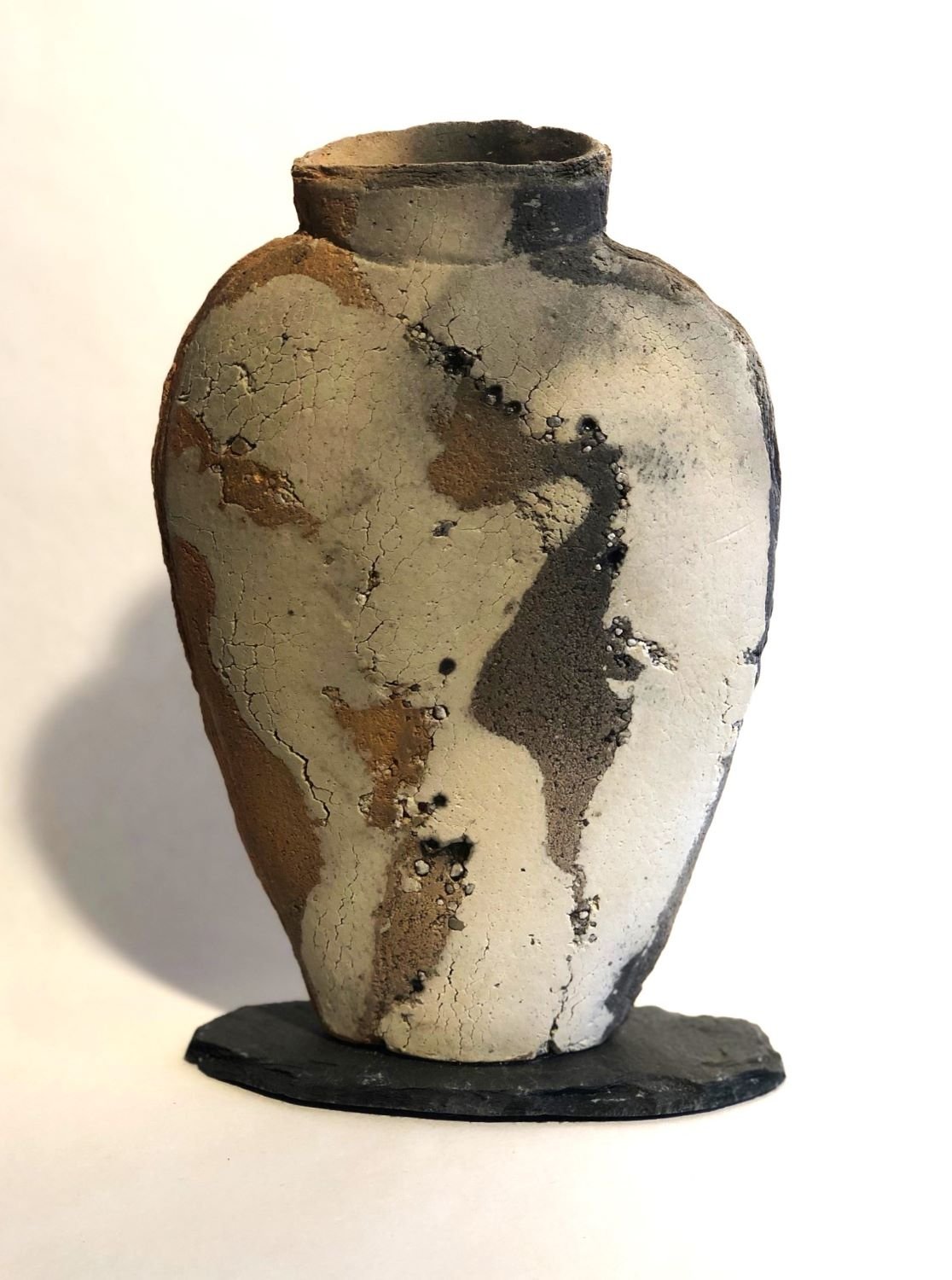
Vase Object XXIII-VII, stoneware hand-built slab with a slate base, studded with inclusions of natural materials, and wood-fired in a chamber kiln. The piece is chiselled after firing to reveal the essence of the piece, 8.5 x 6 x 2.5 inches (21.6 x 15.2 x 6.5 cm), 890 gm., $295.00 Cdn.
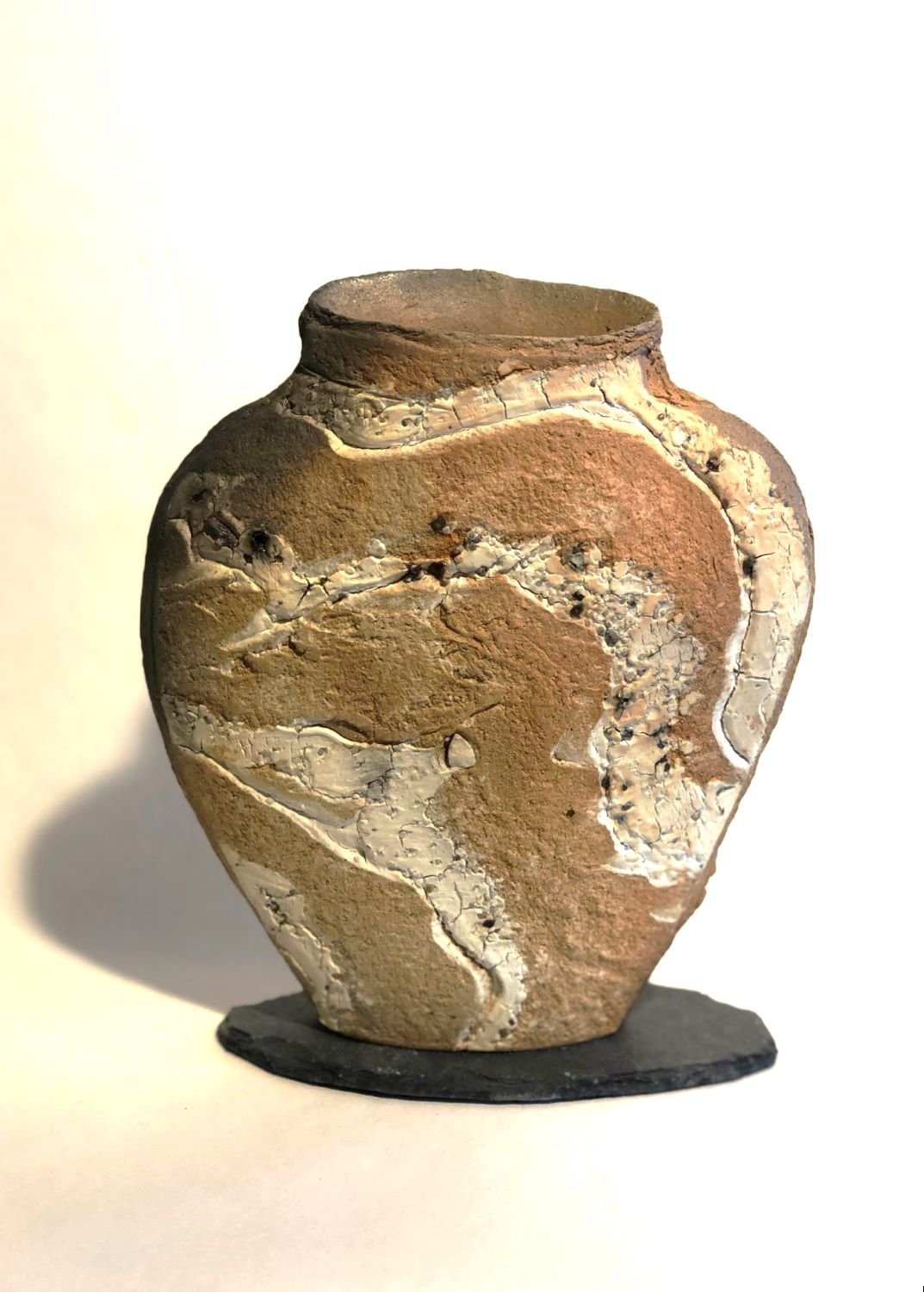
Vase Object XXIII-VIII, stoneware hand-built slab with a slate base, studded with inclusions of natural materials, and wood-fired in a chamber kiln. The piece is chiselled after firing to reveal the essence of the piece, 8.25 x 7 x 2.75 inches (21 x 17.9 x 7 cm), 1 kg., $295.00 Cdn.

Vase Object XXIII-XIV, stoneware hand-built slab with a slate base, studded with inclusions of natural materials, and wood-fired in a chamber kiln. The piece is chiselled after firing to reveal the essence of the piece, 8.25 x 6 x 2.5 inches (21 x 15.7 x 6.5 cm), 966 gm., $295.00 Cdn.
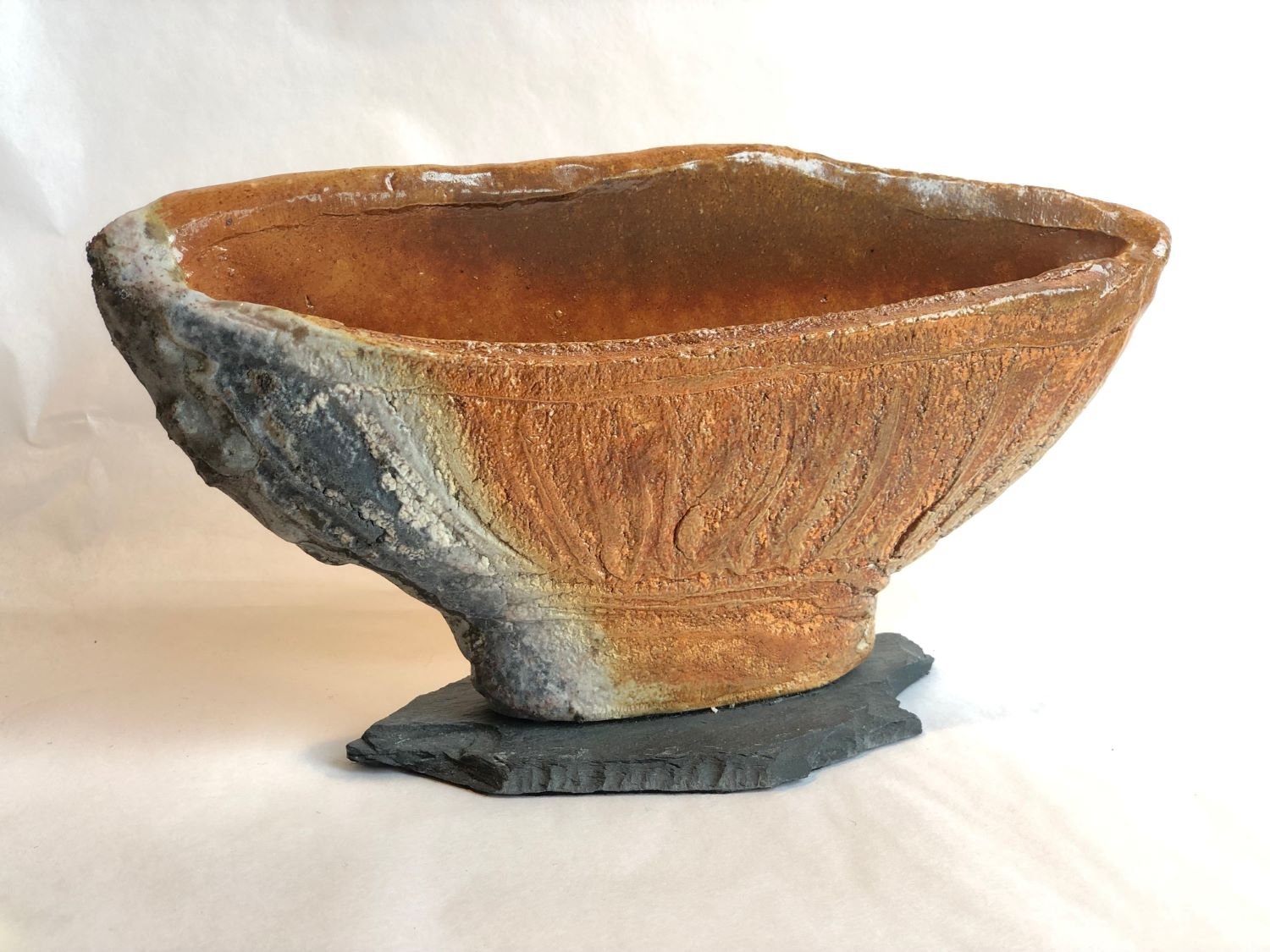
Bowl Object XXIV-VIII, stoneware hand-built slab with a slate base, studded with inclusions of natural materials, and wood-fired in a chamber kiln. The piece is chiselled after firing to reveal the essence of the piece, 4.75 x 9 x 3 inches (12.5 x 13.5 x 8 cm), $280.00 Cdn.

Bowl Object XXIV-IX, stoneware hand-built slab with a slate base, studded with inclusions of natural materials, and wood-fired in a chamber kiln. The piece is chiselled after firing to reveal the essence of the piece, 4.5 x 9 x 2.75 inches (11.5 x 13 x 7 cm), $260.00 Cdn.
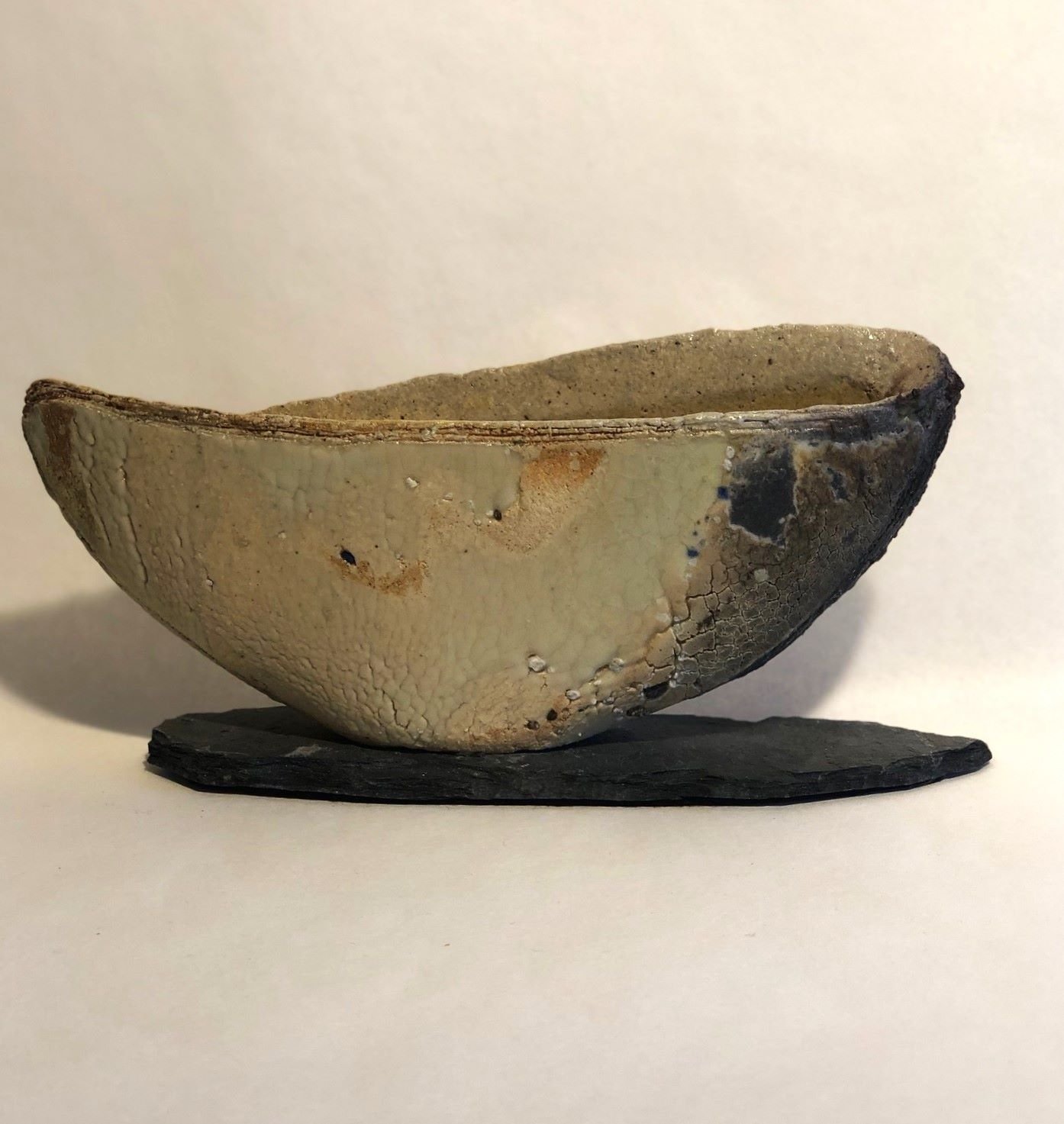
Bowl Object XXIII-XI, stoneware hand-built slab with a slate base, studded with inclusions of natural materials, and wood-fired in a chamber kiln. The piece is chiselled after firing to reveal the essence of the piece, 3.5 x 7.25 x 2 inches (9 x 18.4 x 5.1 cm), 398 gm., $225.00 Cdn.
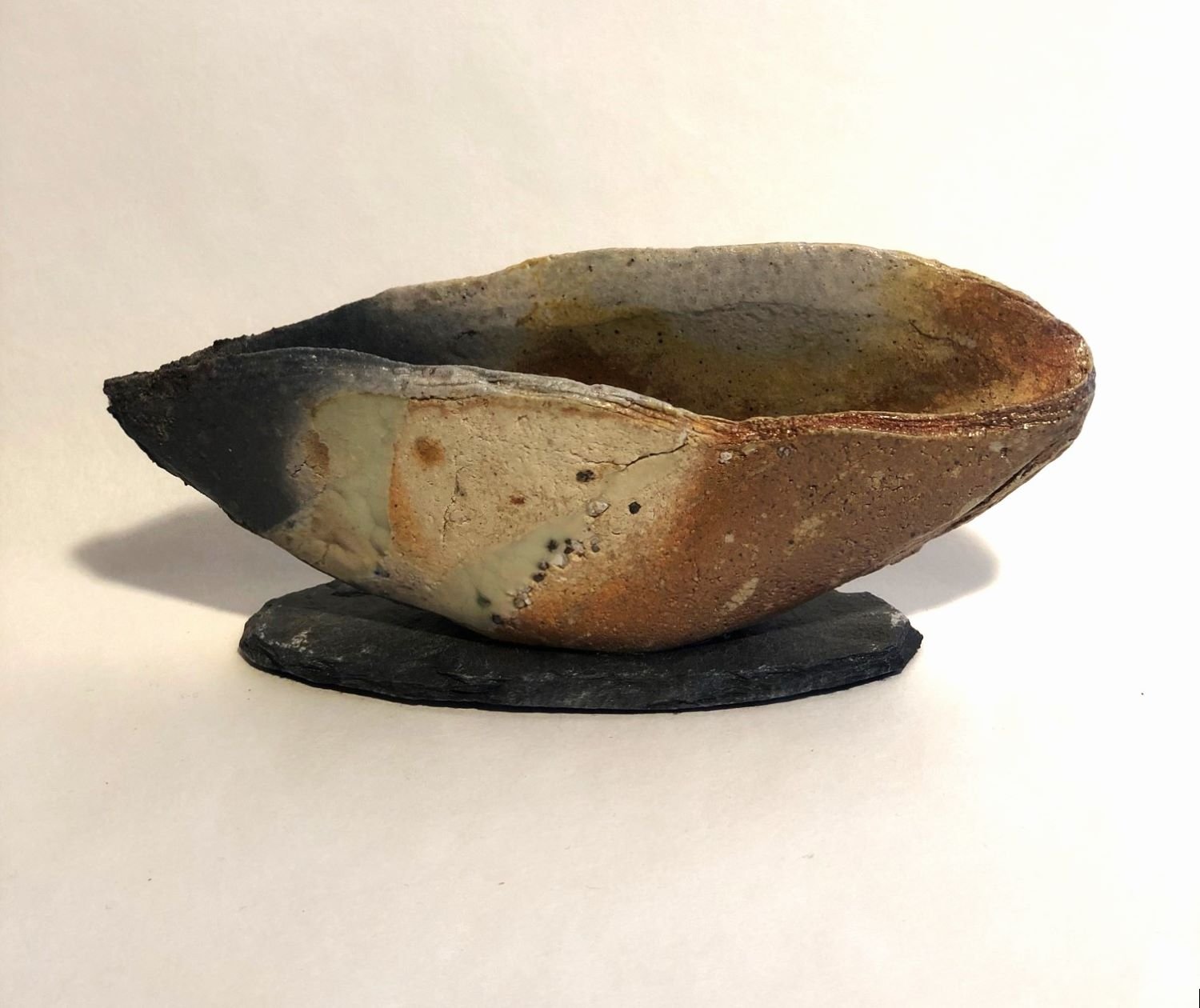
Bowl Object XXIII-XII, stoneware hand-built slab with a slate base, studded with inclusions of natural materials, and wood-fired in a chamber kiln. The piece is chiselled after firing to reveal the essence of the piece, 3 x 7 x 1.75 inches (8 x 17.9 x 4.5 cm), 314 gm., $225.00 Cdn.
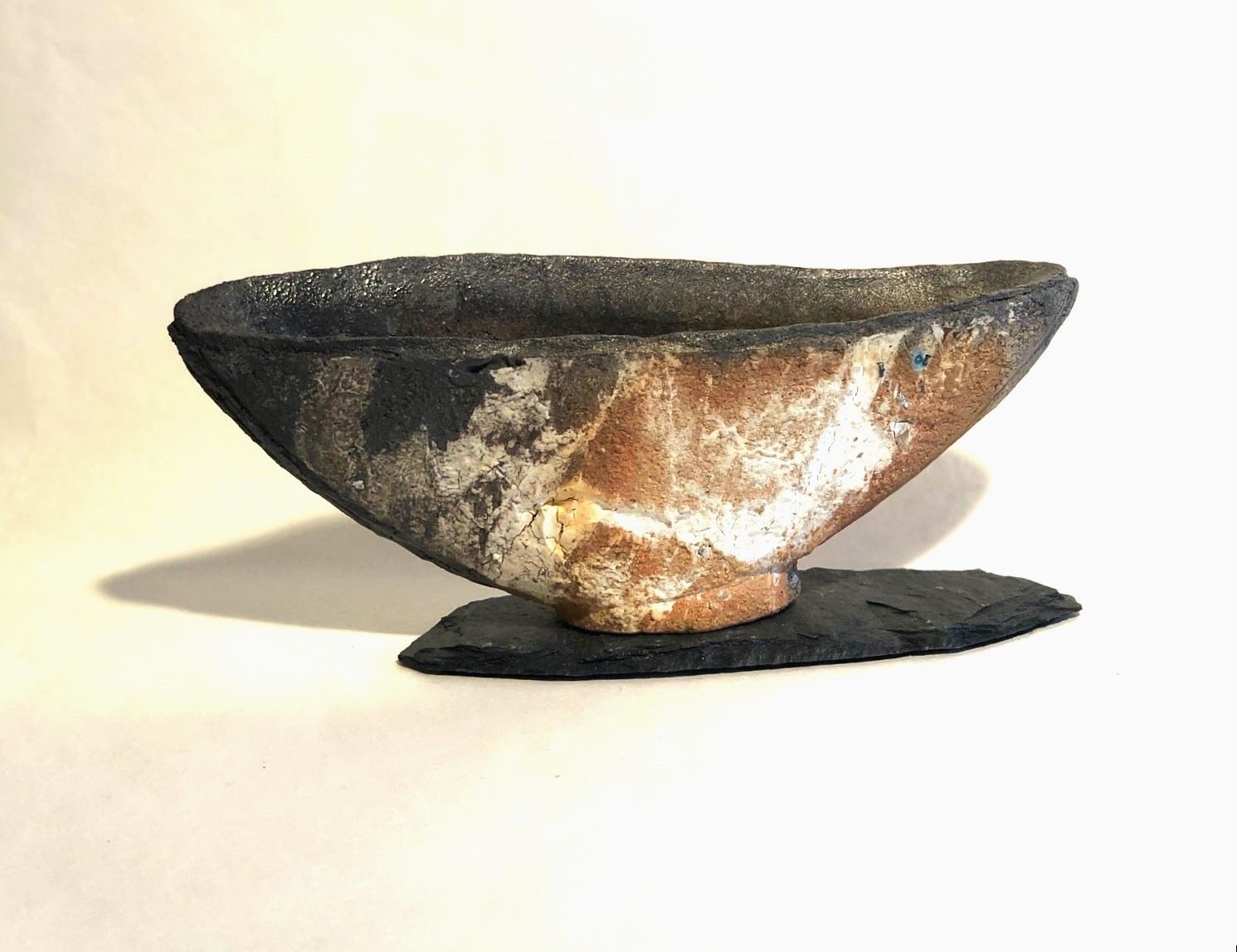
Bowl Object XXIII-XIII, stoneware hand-built slab with a slate base, studded with inclusions of natural materials, and wood-fired in a chamber kiln. The piece is chiselled after firing to reveal the essence of the piece, 3.25 x 7.5 x 1.75 inches (8.3 x 19 x 4.5 cm), 326 gm., $225.00 Cdn.
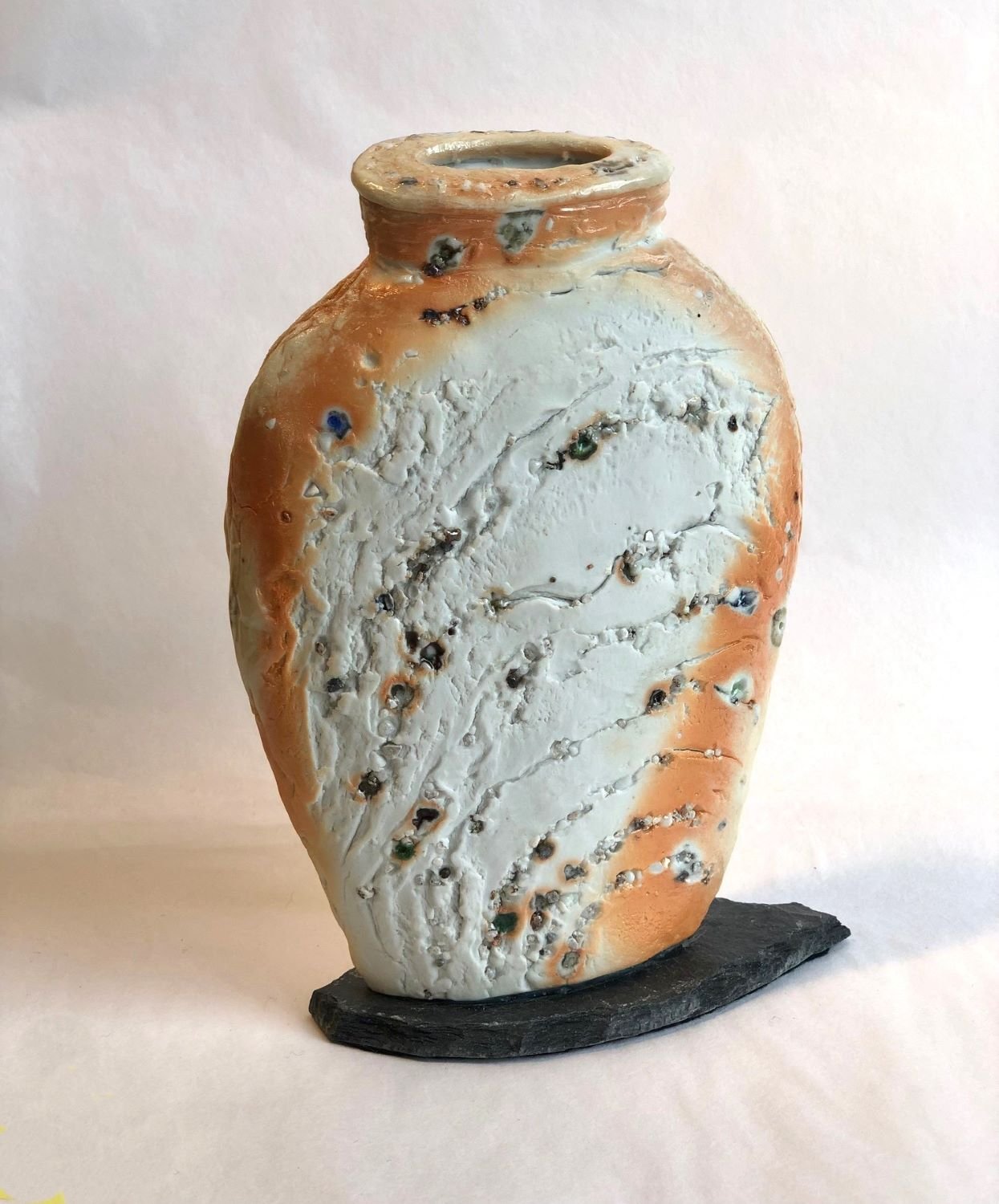
Vase Object XXIV-VII, porcelain hand-built slab with a slate base, studded with inclusions of natural materials, and wood-fired in a chamber kiln. The piece is chiselled after firing to reveal the essence of the piece, 6.75 x 4.75 x 2 inches (17 x 12 x 5.5 cm), $280.00 Cdn.
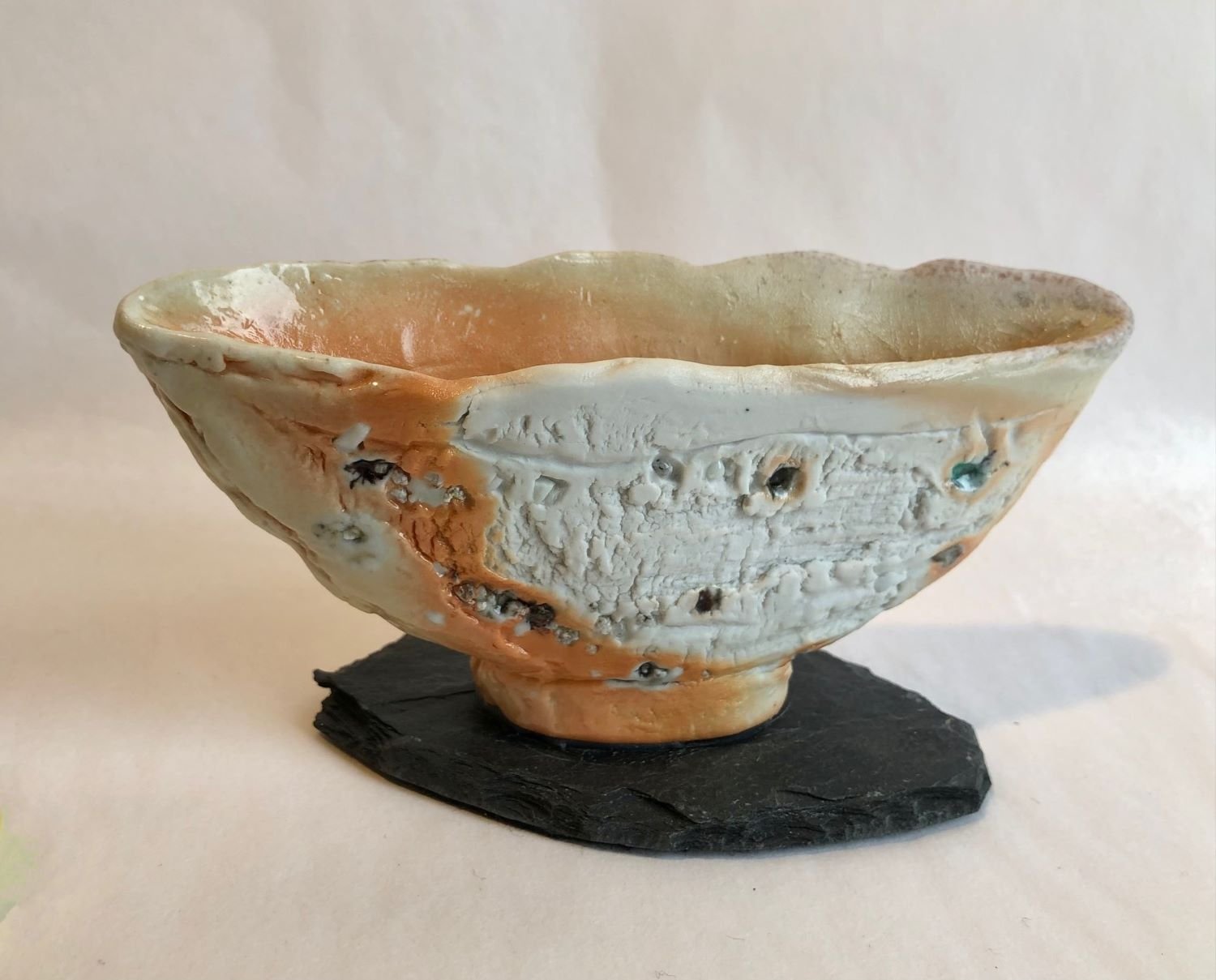
Bowl Object XXIV-X, porcelain hand-built slab with a slate base, studded with inclusions of natural materials, and wood-fired in a chamber kiln. The piece is chiselled after firing to reveal the essence of the piece, 2.75 x 5.5 x 2 inches (7 x 13.5 x 5 cm), $220.00 Cdn.
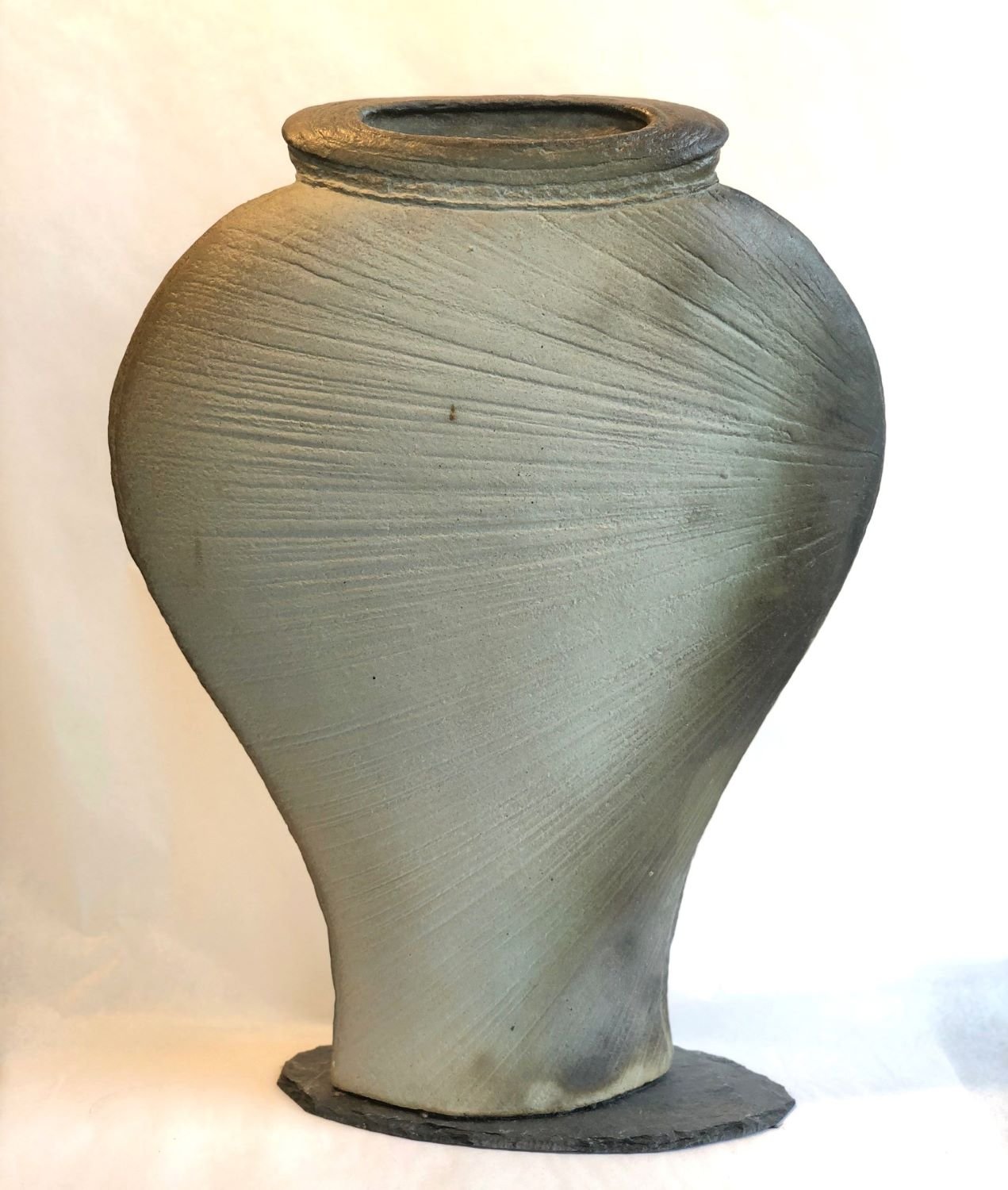
Vase Object XXIV-III, stoneware hand-built slab with a slate base, wood-fired in a chamber kiln, 15 x 11 x 3.25 inches (38 x 28 x 8.5 cm), $725.00 Cdn.
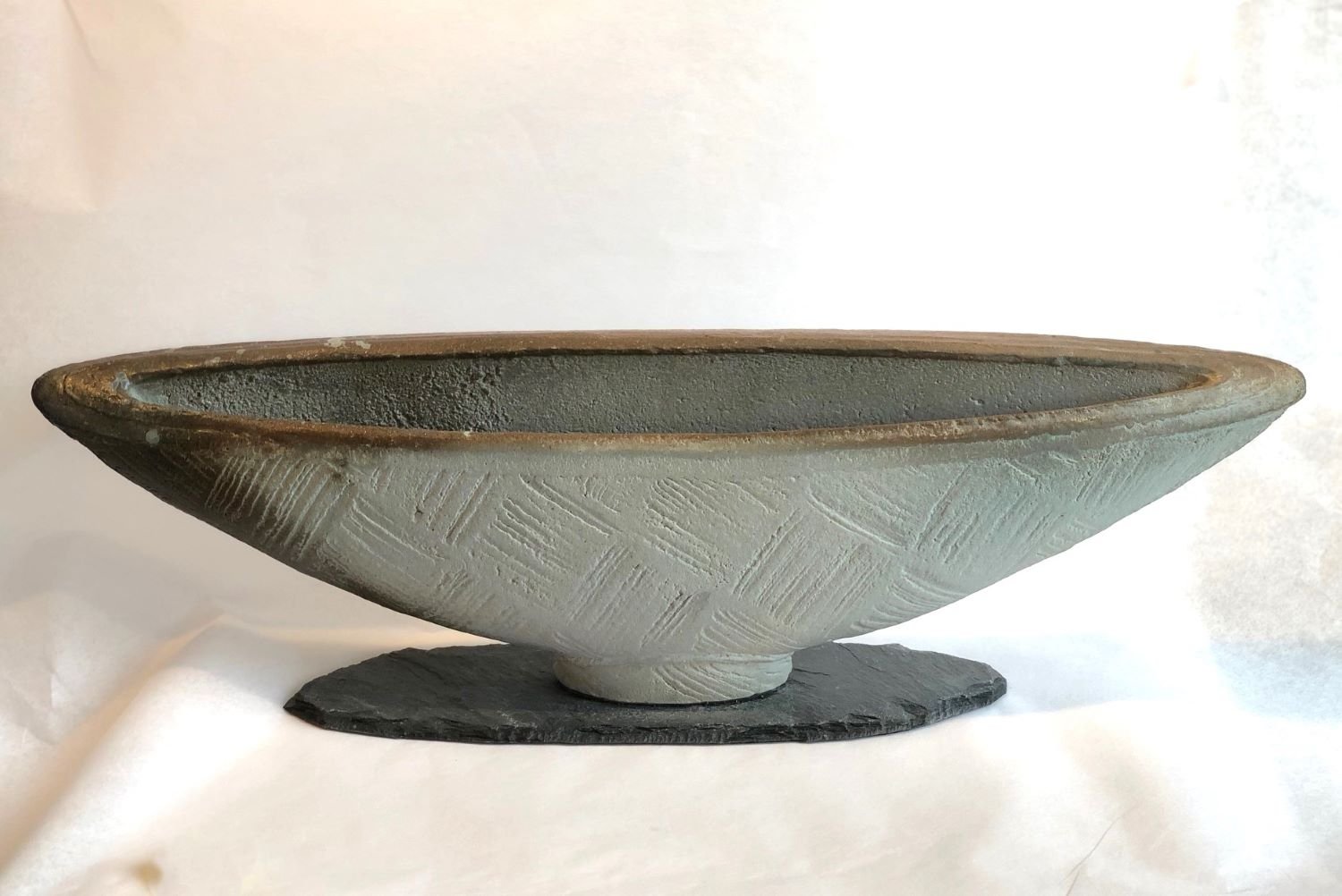
Bowl Object XXIV-IV, stoneware hand-built slab with a slate base, wood-fired in a chamber kiln, 5.5 x 18.5 x 3 inches (14 x 47 x 7.5 cm), $620.00 Cdn.
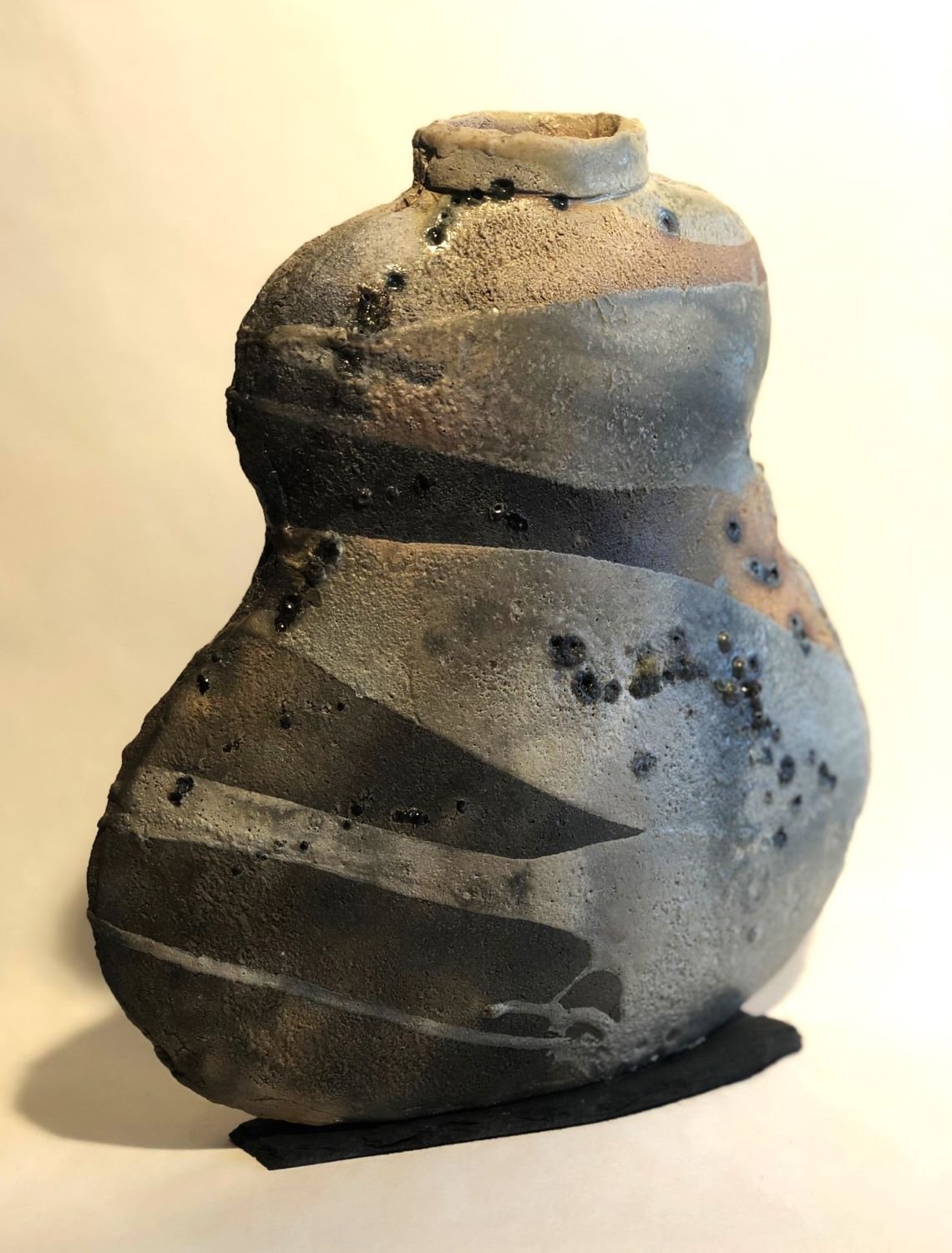
Vase Object XXI-II, stoneware hand-built slab with a slate base, studded with inclusions of natural materials, and wood-fired in a chamber kiln. The piece is chiselled after firing to reveal the essence of the piece, 11.5 x 10 x 2.5 inches (29 x 26 x 6.5 cm), 2.5 kg., $320.00 Cdn.
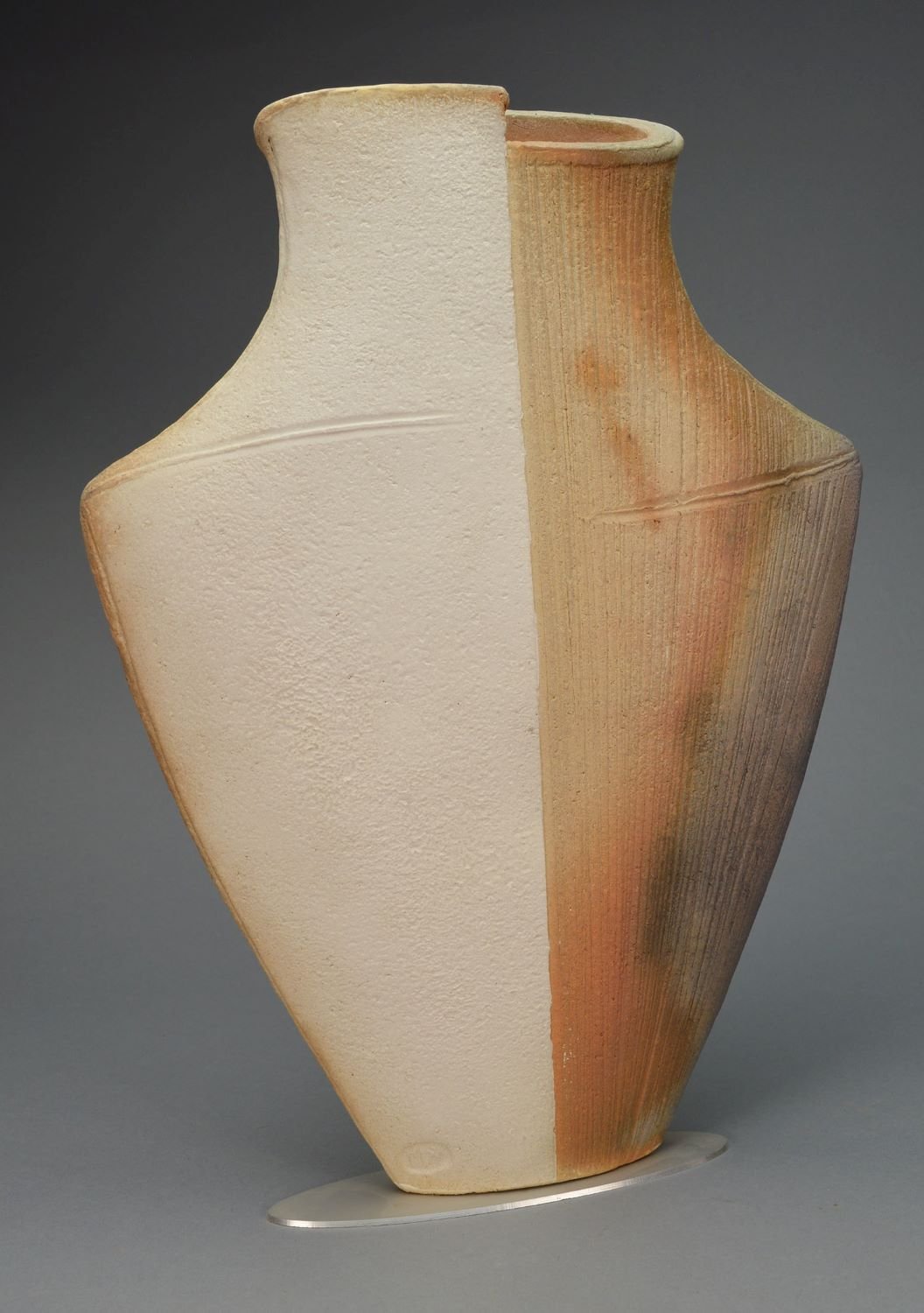
Vase Object XXIII-C, n.d., hand-built slab with an aluminium base, 14.5 x 10.5 x 2 inches (37 x 27 x 5 cm), $725.00 Cdn.
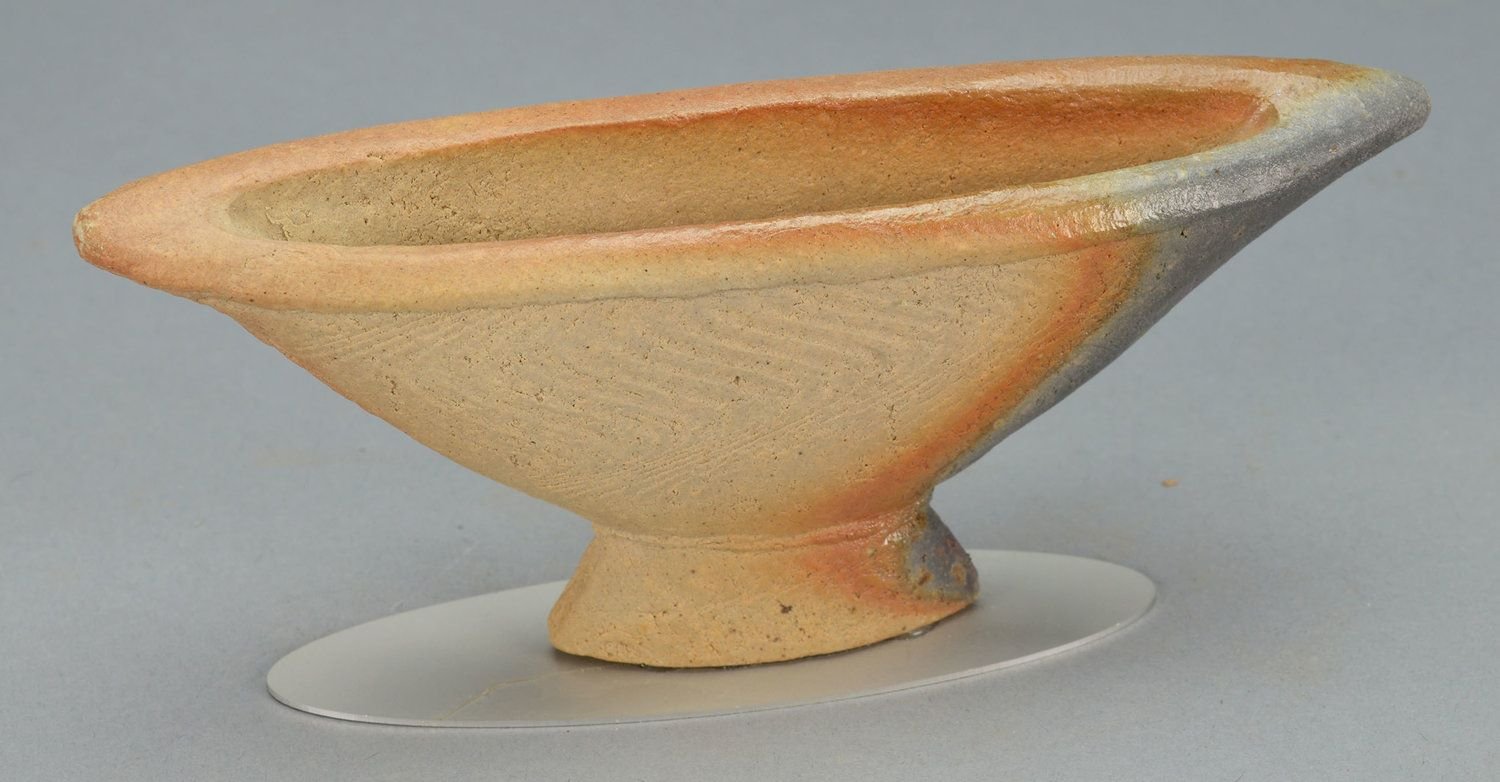
Dish Object XXIII-B, n.d., hand-built slab with an aluminium base, 3 x 7 x 1.5 inches (8 x 18 x 4 cm), $200.00 Cdn.
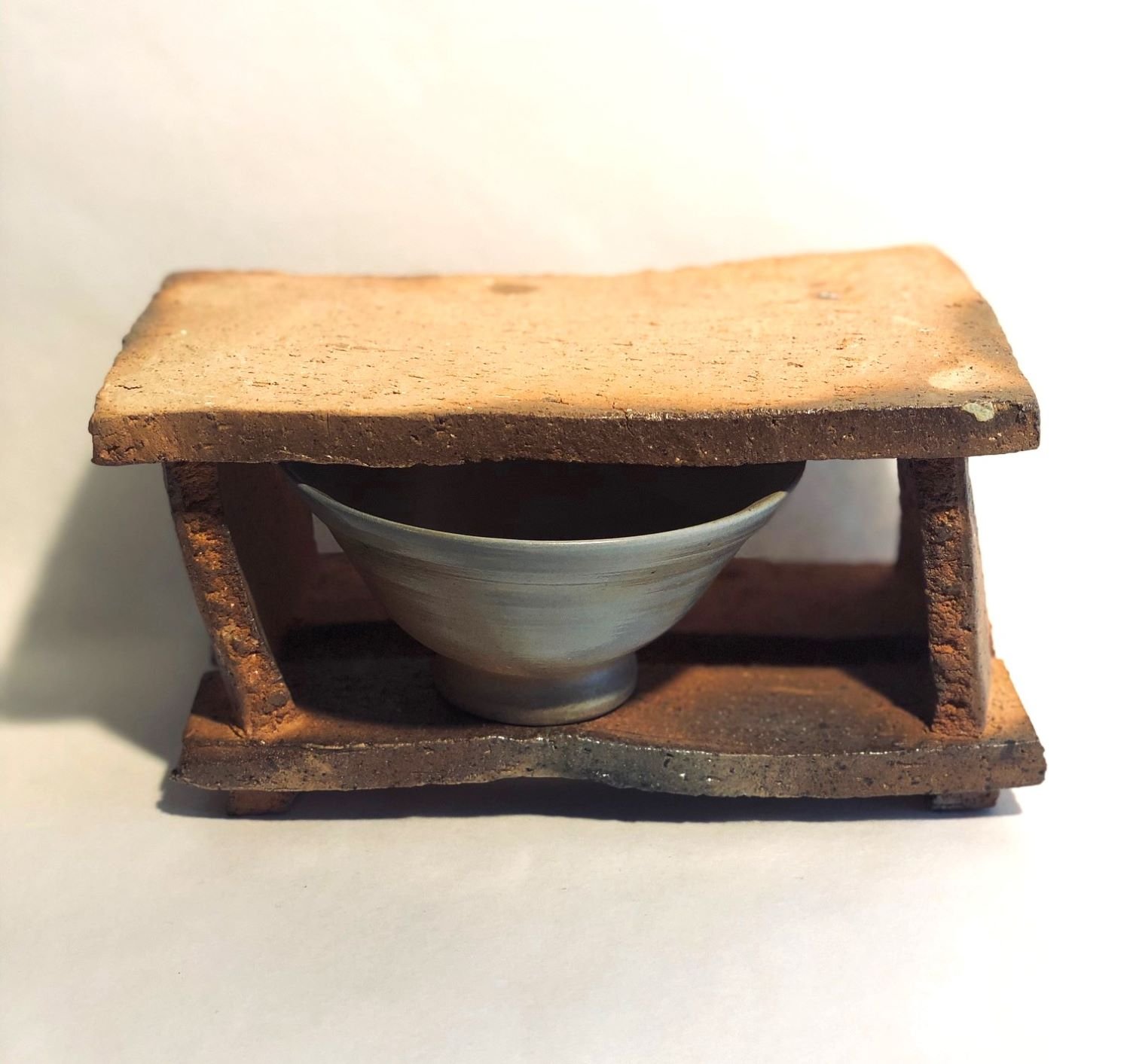
Stacca Bowl #4, woodfired porcelain cup and stoneware stand, 4 x 8 x 4.5 inches (10x20x11.5 cm), 1.4 kg., $150.00 Cdn.
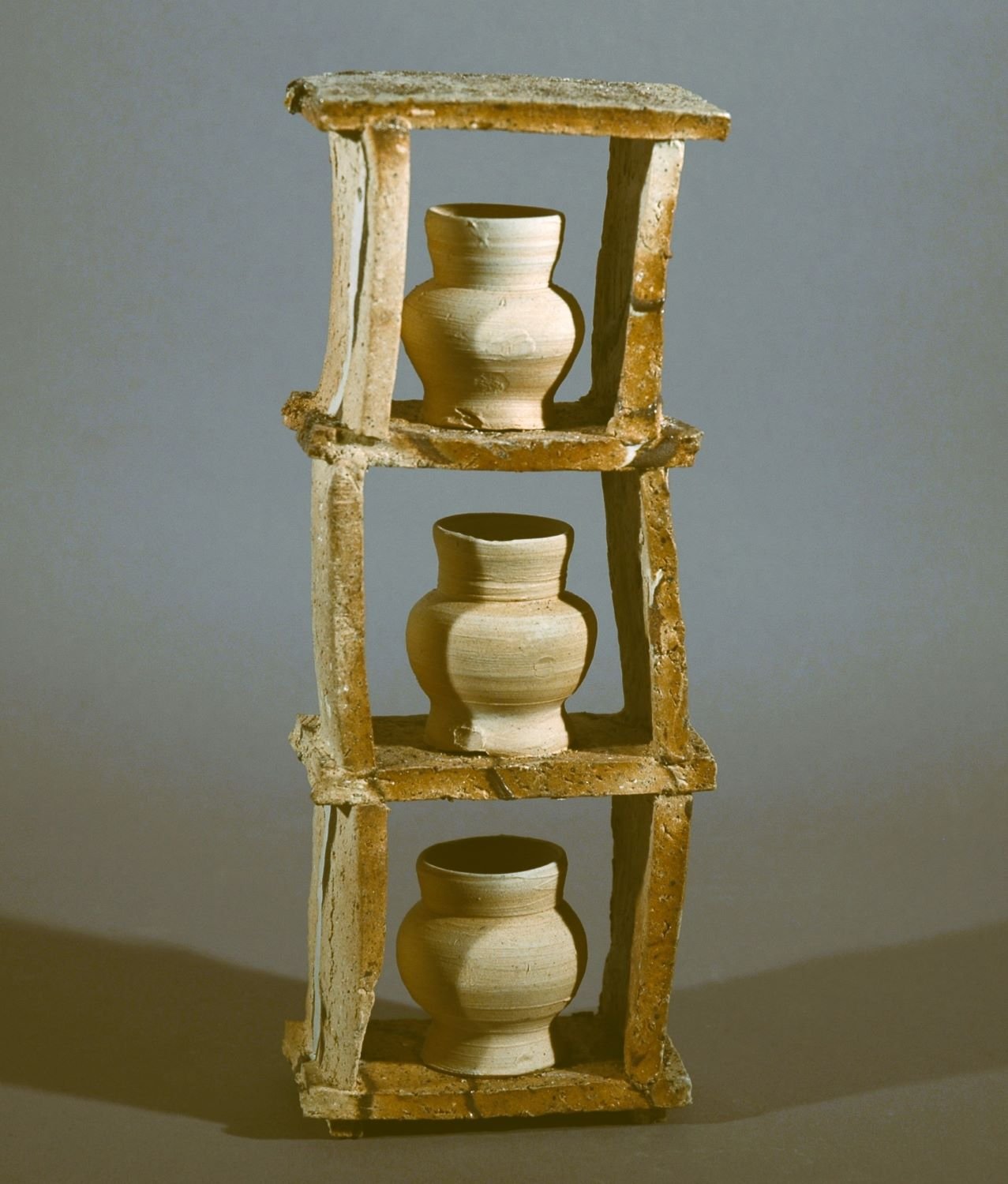
Stacca Vase Sculpture #7, woodfired, semi-porcelain, stoneware, 4 x 8 x 1 inches (10x20x2.5cm), 494 gm., $295.00 Cdn.
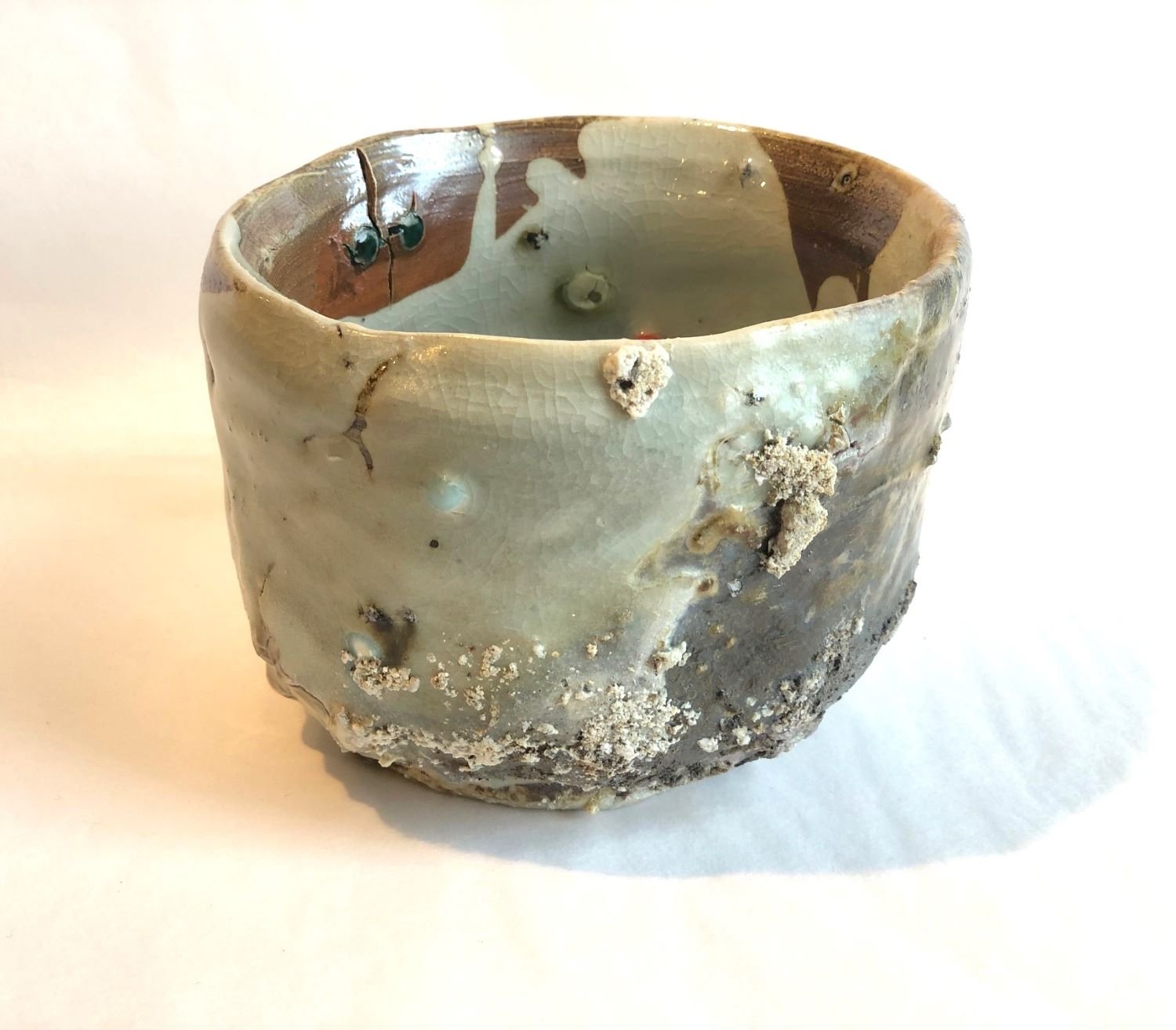
Chawan Matcha Bowl (Tea Bowl) XXIV-XI, for preparing matcha tea, stoneware hand-built coil, studded with inclusions of natural materials, and wood-fired in a chamber kiln, 3.5 x 5 inches (8.5 x 12.5), $270.00 Cdn.
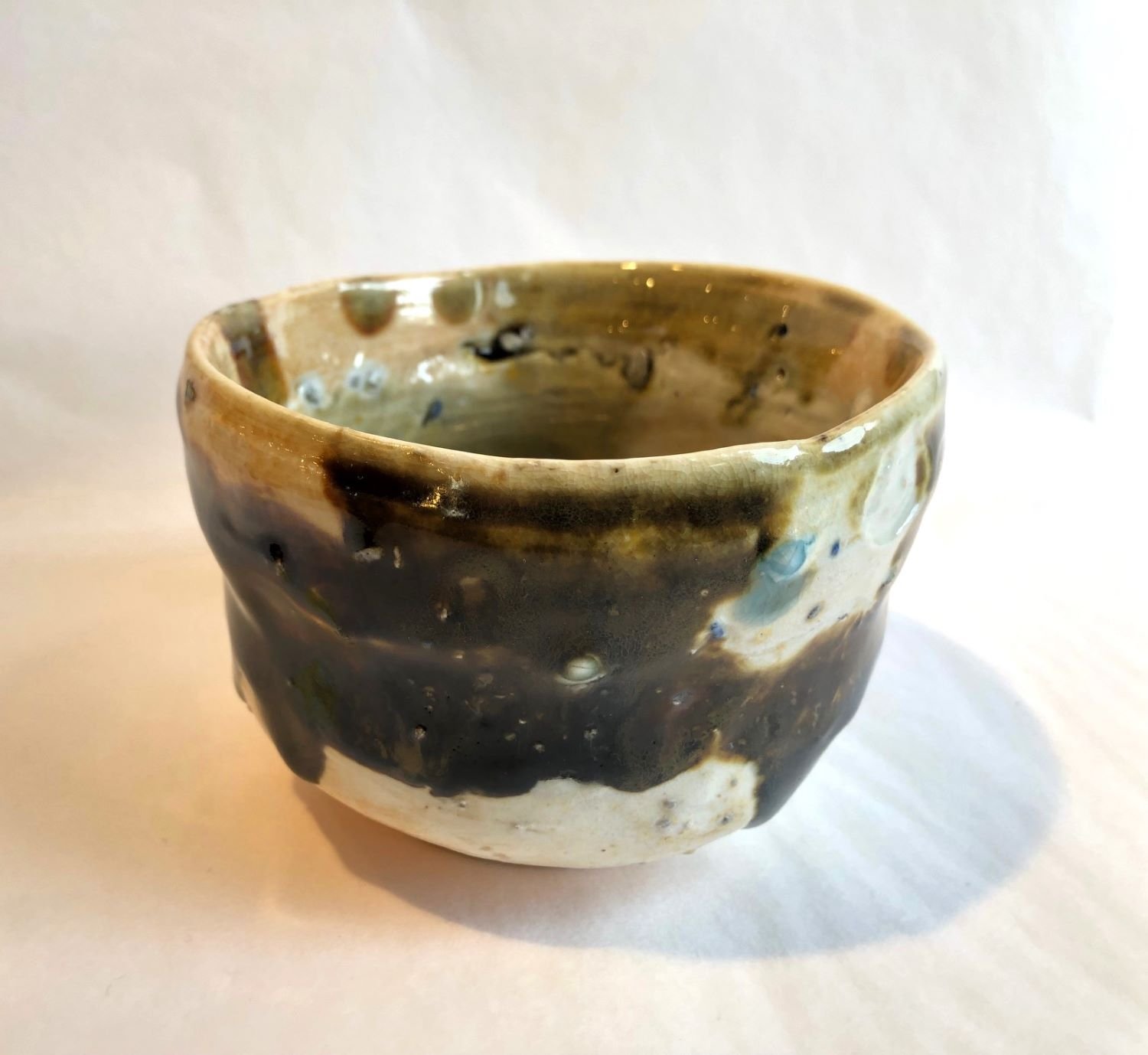
Chawan Matcha Bowl (Tea Bowl) XXIV-XII, for preparing matcha tea, porcelain hand-built coil, studded with inclusions of natural materials, and wood-fired in a chamber kiln, 3.25 x 4.5 inches (8 x 11.5), $270.00 Cdn.
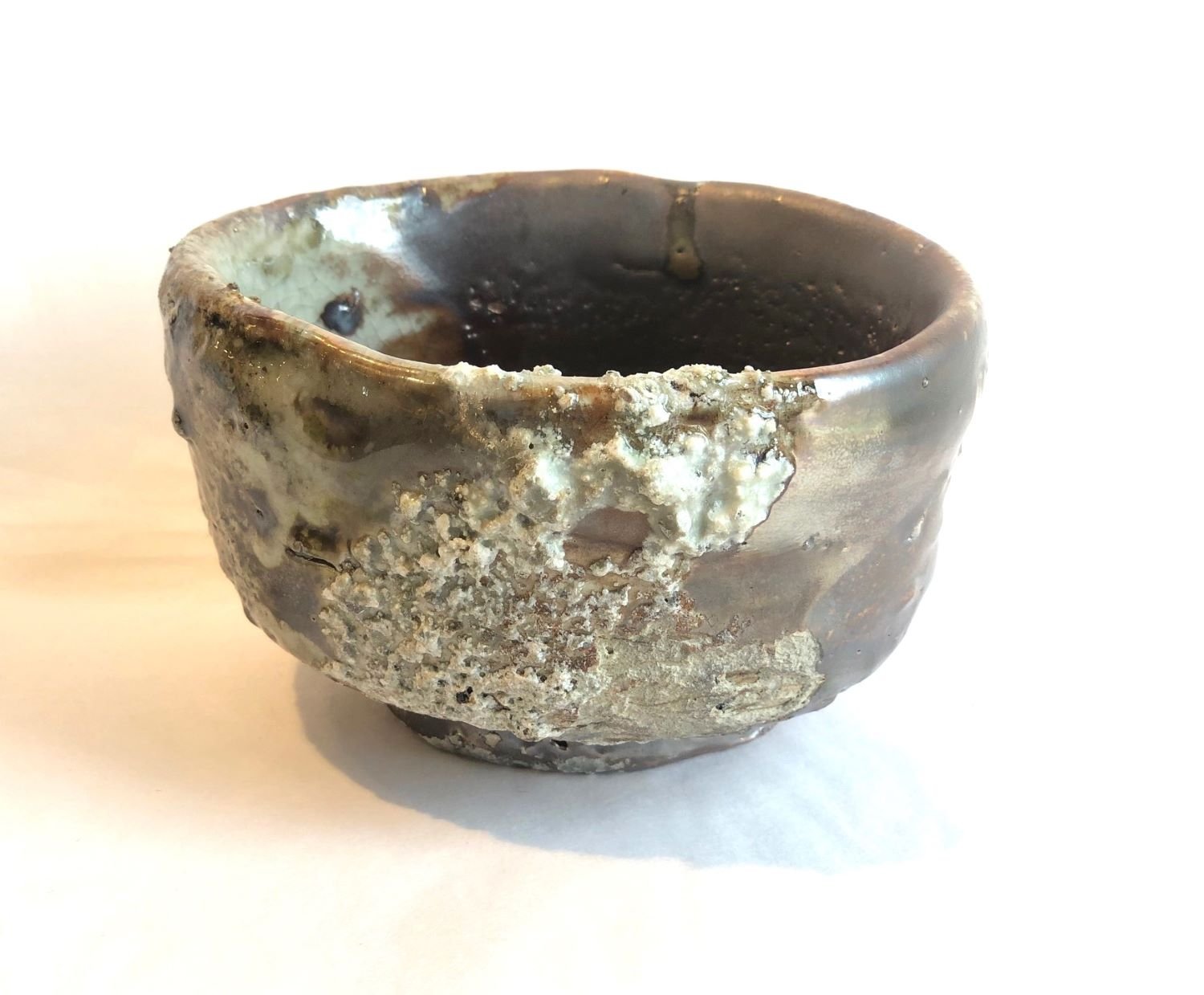
Chawan Matcha Bowl (Tea Bowl) XXIV-XIII, for preparing matcha tea, porcelain hand-built coil, studded with inclusions of natural materials, and wood-fired in a chamber kiln, 3.25 x 5.25 inches (8 x 13.5), $270.00 Cdn.
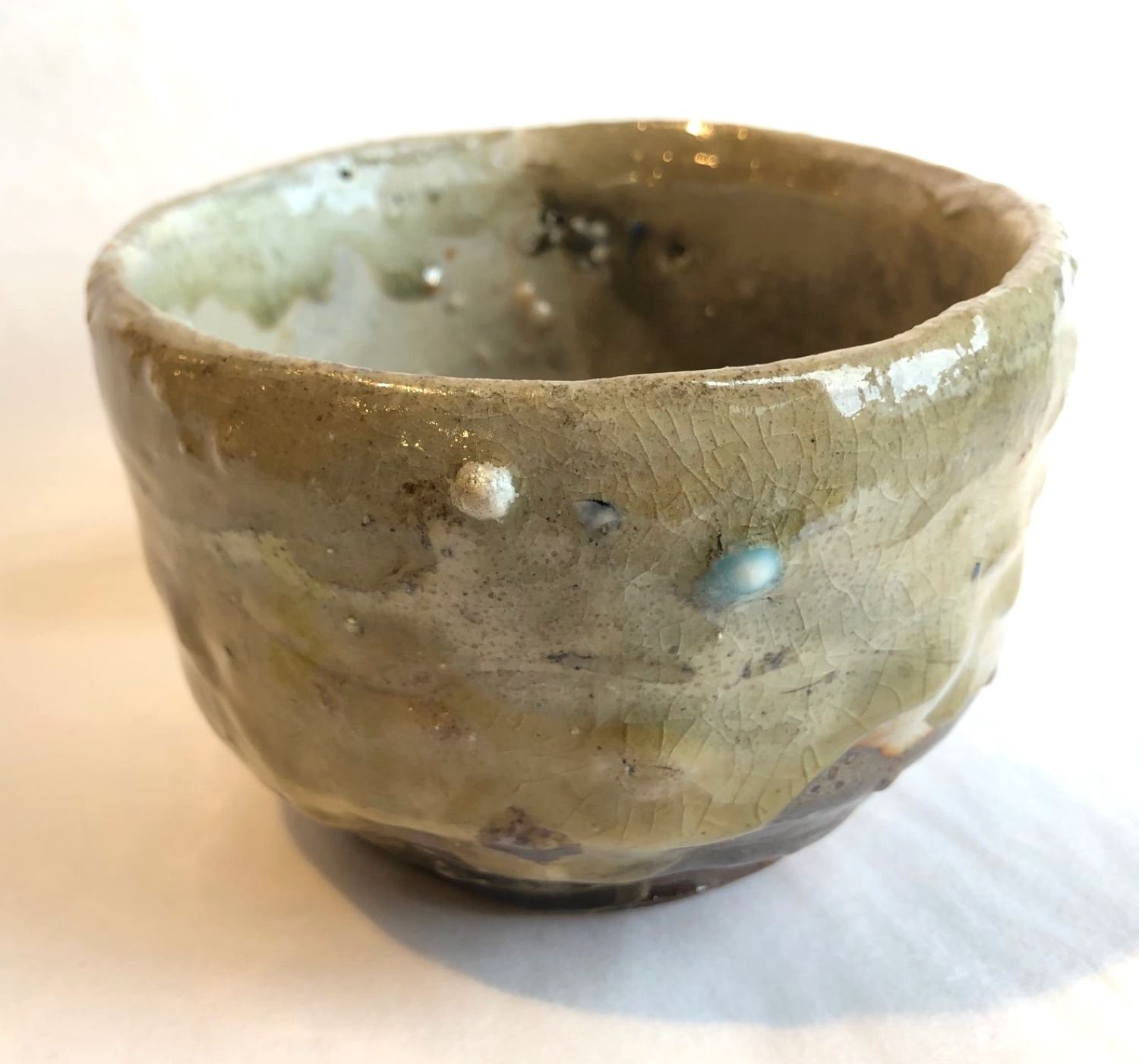
Chawan Matcha Bowl (Tea Bowl) XXIV-XI, for preparing matcha tea, stoneware hand-built coil, studded with inclusions of natural materials, and wood-fired in a chamber kiln, 3.25 x 4.75 inches (8 x 12), $270.00 Cdn.
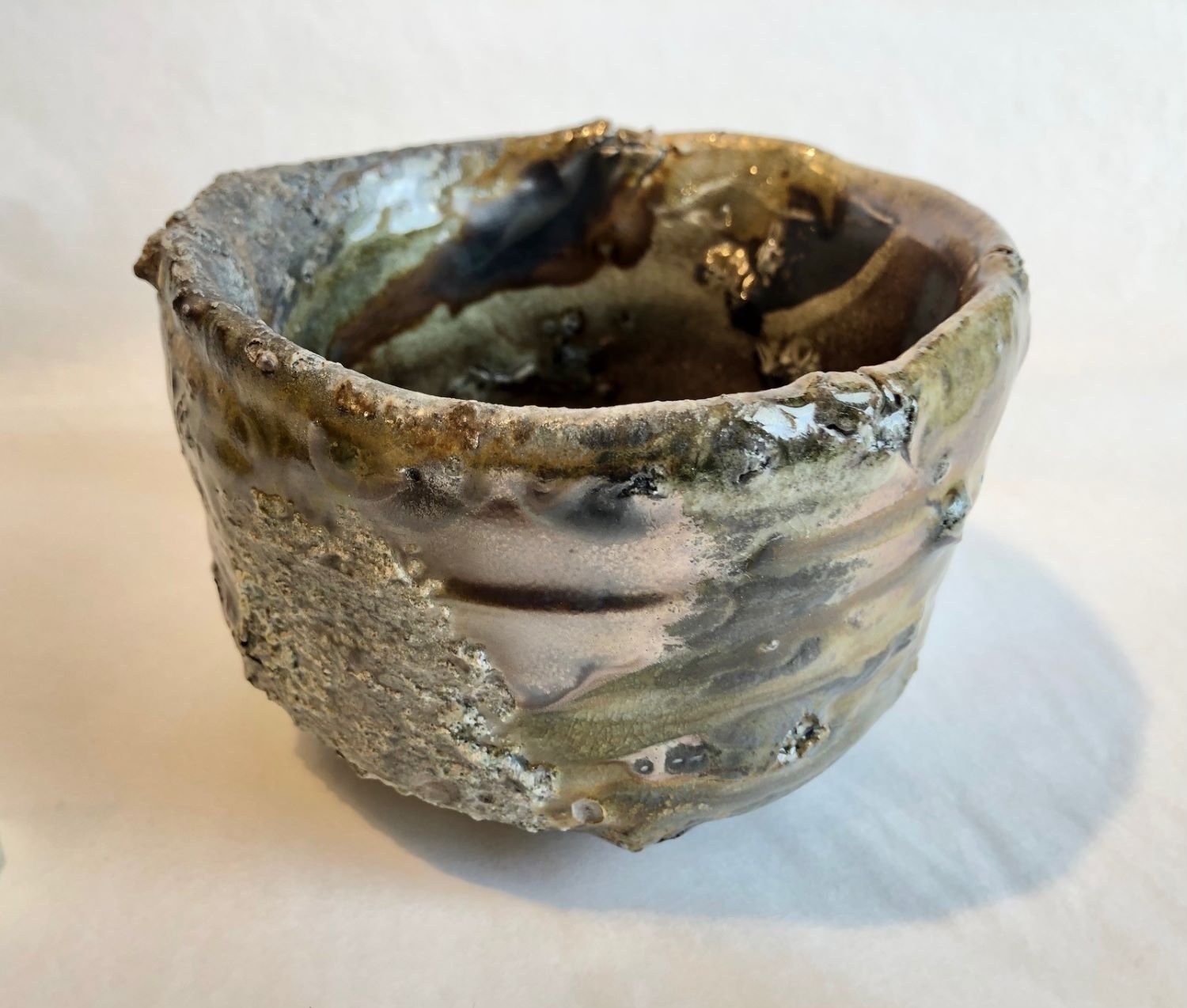
Chawan Matcha Bowl (Tea Bowl) XXIV-XV, for preparing matcha tea, porcelain hand-built coil, studded with inclusions of natural materials, and wood-fired in a chamber kiln, 3.25 x 4.75 inches (8 x 12), $270.00 Cdn.
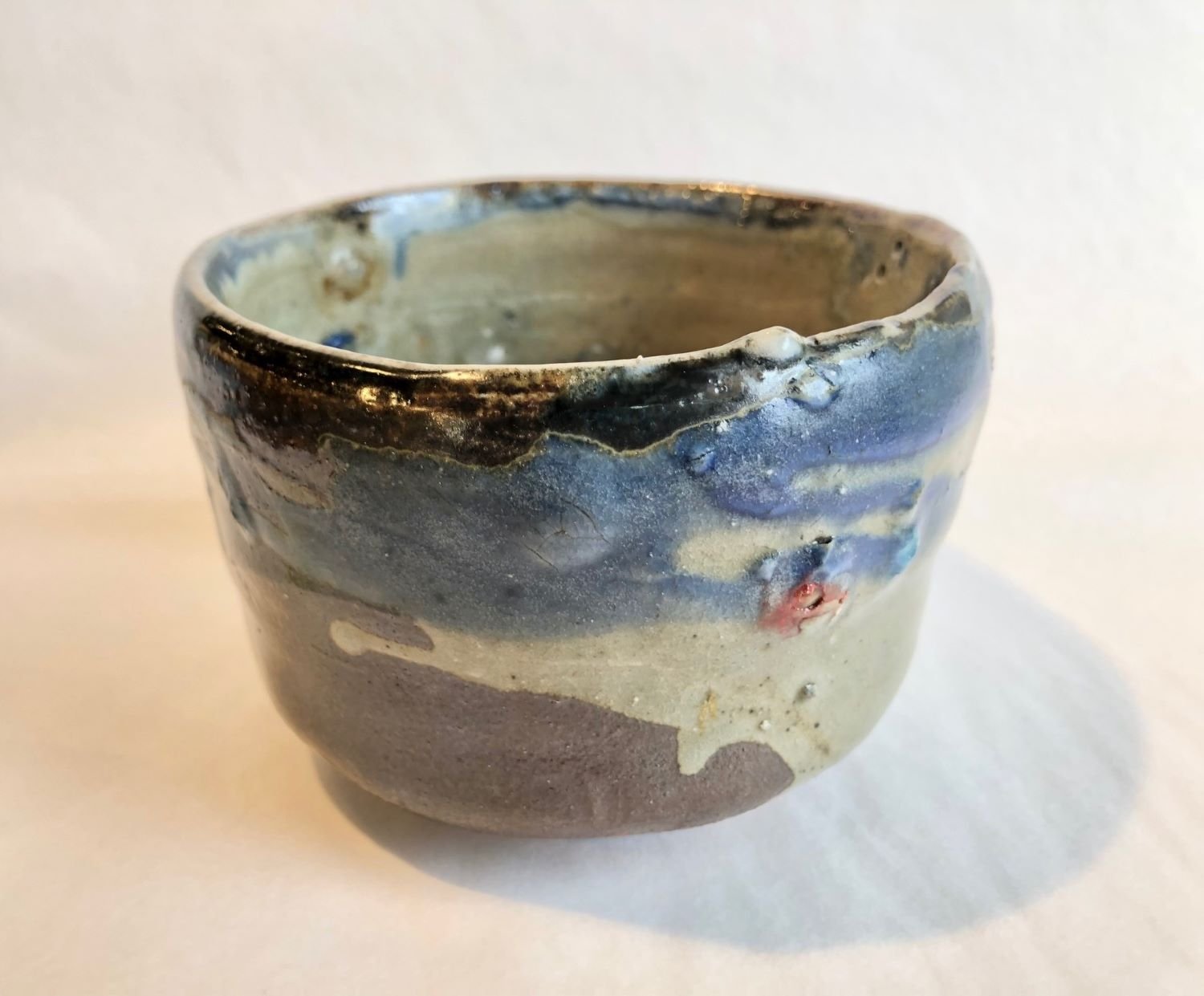
Chawan Matcha Bowl (Tea Bowl) XXIV-XVI, for preparing matcha tea, stoneware hand-built coil, studded with inclusions of natural materials, and wood-fired in a chamber kiln, 3 x 4.25 inches (7.5 x 11.5), $270.00 Cdn.
trompe-l‘oeil
What I am looking for in my work with 'clay and fire' lies in their own essential beauty and the play between them - a beauty subjective, difficult to define, control or repeat - something to do with chance coincidence. My methods are as simple / direct as possible where chance has space to surprise. This leads me along a narrow ridge between my will and that of the material.
I make coil/slab-built Stoneware "Trompe-l'œil" objects, coloured with kaolin slips all wood-fired in a 6 ku/m chamber kiln. They give the idea of simple bowls and jars, of a tradition that has given me a lifelong fascination, but take them into another space of the mind.
McWilliam’s work imprints itself into a very long tradition that dates far beyond the strands of modernity and the concept of art as we know it, at the same time as he points to the most advanced scientific studies. In premodern cultures the cultic object would form a bridge between this world and the divine forces beyond human understanding.
Today we investigate these fields in the context of consciousness studies, Superstring theory and quantum physics that all end up questioning the present view on reality. Both represent and materialize a connexion between the world as we know it and the space that is beyond human consciousness. Compared to the cultic object, in a postmodern context McWilliam creates a similar passage, precisely because his works adapt and incorporate the postmodern reality.
The play with dimensions openly tells the story of postmodern deconstruction, but still, essence has not been lost. The extended awareness that is created as time and space merge offers us a possibility to get in touch with those deeper layers of human existence. The most existential experiences expressed in the humble form of a vessel.
